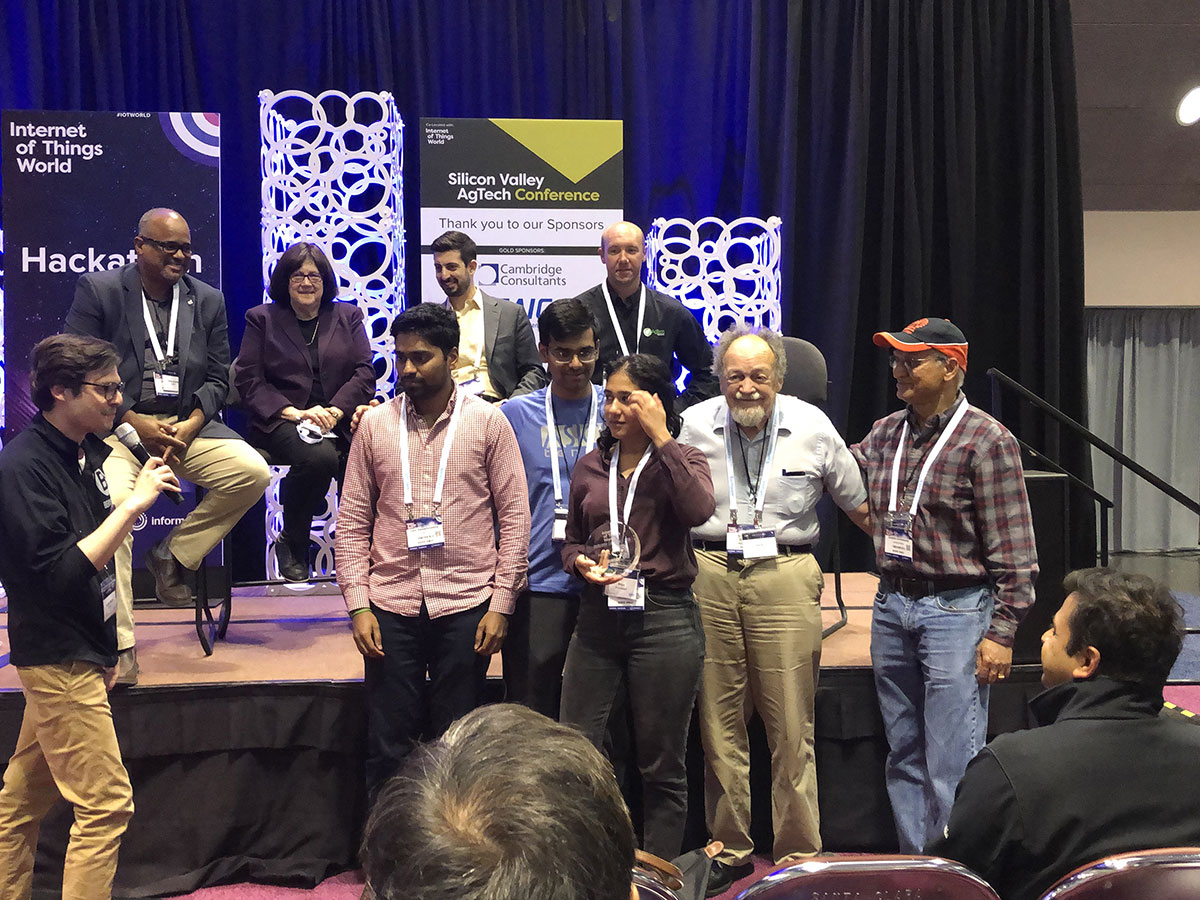Using USDA Datasets to Address Water Management Challenges at the IoT World Hackathon
Using USDA Datasets to Address Water Management Challenges at the IoT World Hackathon
This spring, the U.S. Department of Agriculture (USDA) joined technical experts, IT professionals, and app developers for the Silicon Valley Agtech hackathon at the 2019 Internet of Things (IoT) World and Silicon Valley Agtech Conferences in Santa Clara, California. The GSA Data and Analytics Center of Excellence (CoE) has been tasked with developing multiple challenges and a hackathon for USDA in 2019. Working collaboratively, the hackathon teams developed new solutions to critical water management issues affecting agriculture and conservation. The hackathon followed the White House’s push toward IT modernization through the CoE Model.
What are Hackathons?
Hackathons are typically multi-day events where programmers and designers engage in collaborative computer programming. “The goal is not gaining unauthorized access to computer systems, or to necessarily produce a completely polished product,” said Andrew Brown, Soil Scientist at the National Resources Conservation Service (NRCS) and mentor at the hackathon. “Rather, hackathons focus on innovation, collaboration, and rapid application development.”
The hackathon provided an ideal platform to address key challenges the USDA is actively working to solve. “Hackathons are a great way to spur innovation and have the potential to solve real issues,” said Ted Kaouk, Chief Data Officer for USDA’s Office of the Chief Information Officer (OCIO). “Farmers and ranchers are using data from satellites, weather forecasts, sensors, and other technology for more precise agriculture, which is helping to improve agricultural processes on their operation while increasing profits and providing even better protection to the environment.”
USDA employees from the Natural Resources Conservation Service (NRCS) also supported the hackathon by serving as judges and mentors for the competition.
Inside the Hackathon
Hackathon participants were challenged to use USDA’s soil, geospatial, and water forecasting data to develop IT products that addressed access to water resources and wise water use to support the sustainability, growth, and viability of agriculture. They were required to consider the following in their solutions: limited use of broadband in the rural U.S., cybersecurity, and applying machine learning models to make data-driven decisions.
The hackathon was a two-day event that included participation from eight teams ranging from 2 – 7 people. During the event, each team gathered around a table to devise a solution while mentors walked around the room to check in, ask questions, and provide guidance.
“Mentors worked one-on-one with hackathon participants to help them conceptualize the challenge and apply the datasets,” said Brown. “Most participants had an approach in mind and a general goal and needed help with conceptual aspects of interpreting the data. Agricultural production systems have fundamental limits and unique considerations that make subject matter expert input very valuable. The mentor cadre’s practical experience in agriculture and environmental problems was critical to helping teams keep their solutions in the realm of possibility.”
Of the eight groups that were formed, three finalists were selected to present their solutions on stage at the “EcoCenter System Stage” located on the Expo Center floor. After the judges reviewed the presentations, Carlos Suarez, NRCS State Conservationist for California, announced “Team Smart Ag” as the winner and presented them with the hackathon trophy.
Team Smart Ag’s Winning Solution
Team Smart Ag developed a low-cost, low-power smart-farming solution that would enable farmers to use devices to monitor a variety of conditions, such as water needs for crops and livestock health. The open-source, conversational artificial intelligence (AI) platform includes a chat bot application that allows farmers to ask questions, such as “Where do I need to water today?”. Team Smart Ag also created a 3D visualization of a hypothetical farm to provide a first-person view of the land, so farmers can locate runoff and areas that need water.
In addition to winning the hackathon trophy, Team Smart Ag received prizes valued at $15K total, which included an interview with ITPro Today and opportunities to present their winning solution at highly-visible events at the conference.
 Congratulations to Team Smart Ag on winning the hackathon!
Congratulations to Team Smart Ag on winning the hackathon!
Return to Updates
